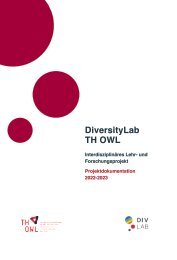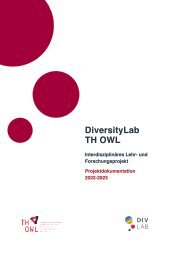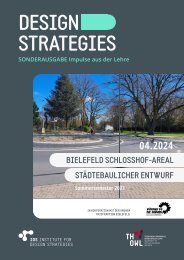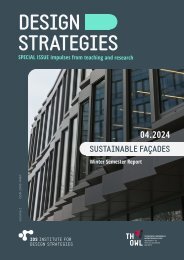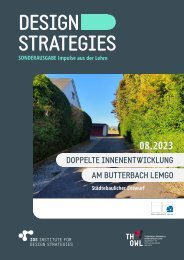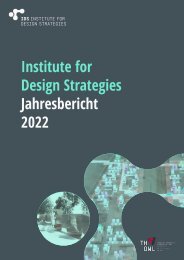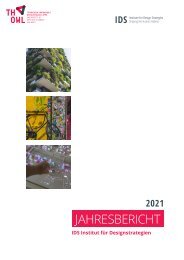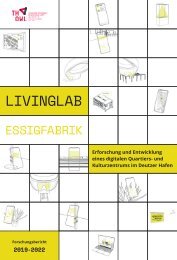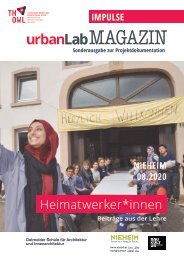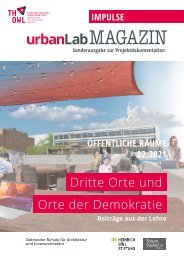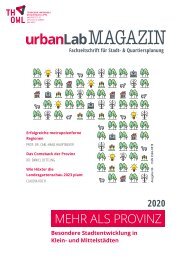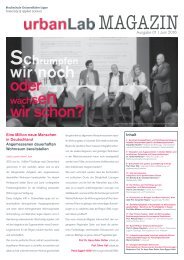urbanLab Magazin 2021 - Transformation
Erfolgreiche ePaper selbst erstellen
Machen Sie aus Ihren PDF Publikationen ein blätterbares Flipbook mit unserer einzigartigen Google optimierten e-Paper Software.
GreenScenario’s integration within the process<br />
enables a pragmatic link between data-driven<br />
results and solution optimisation by guiding<br />
decision-making<br />
4 CONCLUSIONS<br />
The authors aimed to answer the following research question: would the use of<br />
the GreenScenario methodology address the fallacies of previously implemented<br />
decision-support tools – specifically as they relate to 1) integration within known<br />
planning process, 2) the involvement level of stakeholders and 3) the applied methodology<br />
in consideration of other methods or software tools – limit barriers and<br />
increase acceptance of DST within urban planning? Learnings from Vienna:<br />
Firstly, a key enabler for the case study in Vienna was transparency – whether<br />
in the planning process, how calculations or simulations were performed for the<br />
various key performance indicators assessed, the credibility of applied data sources<br />
or the accuracy of the 3D base model compared to actual site conditions.<br />
When stakeholders overcame the barrier associated with a digital tool guiding<br />
the planning process, the second key enabler identified was the visualisation<br />
aspect – both in the speed as well as the graphic depiction of effects and simulations.<br />
By being able to rapidly compare four potential planning options, one was<br />
selected for further optimisation as part of a co-creation conceptual design process.<br />
Lastly, based on a follow-up interview with the private developer, the role of<br />
communication was deemed to be one of the most important enabler for DST. Following<br />
the visual representation of climate data – clear, understandable, appealing<br />
– the private developer could use the arguments for which options performed best,<br />
stimulated discussions about opportunities and challenges of each of the proposed<br />
solutions, and enabled a targeted optimisation of the selected design option based<br />
upon direct feedback from stakeholders. Especially due to the complexity associated<br />
with climate science and its more recent application in the urban planning and<br />
design profession, the multi-layered feedback mechanisms embedded in the tool<br />
– including geospatial visualisations sourced directly from the 3D model combined<br />
with quantitative metrics and integrated microclimatic simulations – simplified communication<br />
and processing the results. The effects and consequences of planning<br />
with climate adaptation tools versus conventional planning approaches could be<br />
more clearly understood between multiple topics simultaneously.<br />
Did the application of the GreenScenario methodology as a decision-support mechanism<br />
– combining both a working process and software tool for aiding in how to<br />
plan with climate adaptive design measures – address the fallacies and limitations of<br />
previously applied decision-support tools? Can data-driven tools provide a new method<br />
of approaching planning climate first with tools such as nature-based solutions<br />
or blue-green infrastructure aligned with conventional infrastructure to improve<br />
our cities today?<br />
REGENERATIVE DESIGN<br />
29




